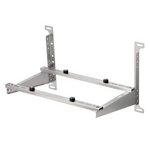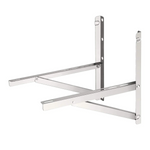
It’s time to read your favorite book again!
One day while walking around the library, you spot a book that you used to love 20 years ago. Memories come back to you; you smile, your eyes shine... A strong desire to read it all over again builds up. You take it out of the shelf and flip through the pages. Then, all of a sudden you feel repelled as if someone had put it under a magic spell to prevent you from reading it. Your strong desire goes away… you take a step back with your head down. It’s that musty smell. Yes, smells can affect our mood and experiences.
So, why was that musty smell there in the first place? First, let me tell you about my grandpa and his books.
We couldn’t save grandpa’s library
Though grandpa left this world before I was born, I was able to witness his love for books some years ago. We found his enormous book collection hidden inside wooden shelves that faced the interior walls of the recreation house he used to own. No one had noticed them until we decided to sell the house.

The mysterious books had some strange colors on their pages and we couldn't stand their smell: that musty smell. Somehow, it was a warning of potential danger. Not wanting to, we were forced to throw all of them away. They’d probably be worth thousands of dollars nowadays, or they could’ve meant unforgettable moments glancing through their pages. But odor won the battle.
Why do books smell musty?
According to the Centers for Disease Control and Prevention (CDC), “Mold grows well on paper products, cardboard, ceiling tiles, and wood products. Mold can also grow in dust, paints, wallpaper, insulation, drywall, carpet, fabric, and upholstery.” So, there’s the answer: Paper and fabrics (some book covers have fabrics) are one of mold’s favorite foods!
That could be one of the reasons why your books smell musty. That funky smell comes from mold. And why do mold colonies tend to grow more in some libraries than in others?

These are some factors that can increase the chances of mold showing up in yours:
- Darkness: Mold colonies are afraid of sunlight.
- Warm temperatures: They love heat and grow better when it’s warm around.
- High moisture: They need high indoor relative humidity levels to survive.
- Food supplies: Mold colonies grow where they find food. Some of their favorite foods are leather, cloth, paper, wallpaper, and wood.
- Calm still air: Mold loves it when the air is still and calm.
- Dusty surfaces: Mold finds dusty surfaces very attractive.
My grandpa’s books met all these conditions so no wonder why they were invaded by mold:
- The books were hidden in absolute darkness.
- The house had warm temperatures all year round.
- It was humid all year round.
- The shelves were made out of wood.
- The books were facing the wall and there was no air circulation at all.
- Dust, dust and more dust. The inside of those shelves wasn’t cleaned for ages!

(Read: 6 steps to winning the battle against mold)
When to clean the books and when to throw them away
Is mold or mildew visible? Then, you'll need to throw away the book. It’s dangerous for your health, and it will spread easily to other books. Yes, mold loves jumping from book to book. Sadly, you can’t recycle these either.
According to biblio.com this could indicate that have mold or mildew growing on your books:
|
Mold Growth |
Mildew Growth |
|
|
Source: biblio.com
How to remove musty smell from books
If you don't detect signs of mold or mildew but there’s still a funky smell, follow these tips:
1. Wear your gear. First of all, wear the appropriate protection. Wear goggles, a mask, and a pair of gloves.
2. Clean up. Clean the covers with a soft cloth.
3. Sheets between pages. Place dryer sheets inside different pages of your book.
4. Magic powder. Magic? Baking soda isn’t Harry Potter, but it does wonders. It’s super powerful and safe. Place your book and an open box of baking soda inside a plastic container. Close the container.
5. Time for quarantine. Leave your books in there for around a week.
6. Set them free. After this time has passed, it’s time to set them free.
Can you notice a difference?
We really hope that this is helpful. But, isn't it also helpful to know how to prevent this from happening in the first place?
How to prevent musty smell on books
The good news is that you can prevent mold and mildew from growing again on your books! Here are some simple tips:

- Sunlight. Give the room some sunlight! But make sure that it doesn't hit your books directly. Otherwise, they can get damaged. Just indirect sunlight, please!
- Temperature control. If temperatures are too warm, turn on the AC. This will make the environment less appealing to mold. Biblio recommends a temperature of around 70 degrees Fahrenheit (21 degrees celsius) when it comes to taking care of your books.
- Humidity levels. If your indoor relative humidity levels are high, reduce them with the help of a dehumidifier. This step is vital. (You can also read: 9 ways to fight humidity)
- Mold-resistant shelves. Purchase shelves that are made from mold-resistant materials. And clean them often!
- Air circulation. Have good air circulation. Open the doors and windows often, but not too long if it's humid outside. A fan is also helpful.
- Clean the dust. Dust often! Remember that mold loves dust, so the less dust there is, the fewer chances of mold showing up. (Read: How to get rid of dust mites)
Now that you know all this, you can live with peace of mind, knowing that there’s a solution, and that your most-loved books can be saved from Mold, the Book-Eater! If you love horror stories, chances are that you’ll enjoy reading them rather than living them.
Other articles you may want to read
6 Steps to Winning the Battle Against Mold
9 Quick Tips to get Mildew Smell out of Clothes
How to Clean Mold with Vinegar and Baking Soda
How to Clean Mold from Leather
TOSOT Dehumidifier Reviews
"We keep several bookshelves of books that would deteriorate in high humidity."
“We have had numerous dehumidifiers for our 1500-square ft basement, where we keep several bookshelves of books that would deteriorate in high humidity. This 30-pint dehumidifier is exceptionally efficient, pulling moisture out of the air even when there are heavy rains outdoors. Recommend this unit HIGHLY. Easy to set up; filter access is easy. We attach a drain hose to our unit, so don't have to empty the reservoir. Water just drips into downstairs basement drain.” Geral B. Leedom, TOSOT 30-Pint Dehumidifier customer
"No more musty-smelling books..."
“Since I've owned this de-humidifier for a mere three months, I can't speak yet for its durability; but I will say that this machine really does get the job done, sucking almost exactly three pints of water a day out of my otherwise soggy, mold-infested Pacific Northwest apartment. No more damp shoes, no more musty-smelling books...and even better, no more of the chronic aches and pains that come from living in perpetual dampness!
I've also found that I can keep the thermostat set a few degrees lower, since cold dry air is a lot less uncomfortable than the same temperature at 70% humidity.
And it's really a a breeze to empty--much better designed than the smaller one I had before. All in all, I have high hopes that this dehumidifier will last for years, for it appears to be designed well, and made of durable materials.”
Roobert, TOSOT 70 Pint Dehumidifier Customer
"Before we used this our paper products were soft from the humidity."
“We live in a rainforest and this machine keeps us comfortable in our home. Before we used this our paper products were soft from the humidity, and our clothes and everything was sticky. Now we are comfortable for a reasonable price.” Mike, TOSOT 30 Pint Dehumidifier Customer
Use information at your own risk: The information presented is intended for educational purposes only and is not intended to be a substitute for professional advice, diagnosis or treatment. Never disregard professional medical or home improvement advice. The information and suggestions should be discussed with a professional. You are responsible for independently verifying the information if you intend to rely upon or use it in any way. You use all information at your own risk.






